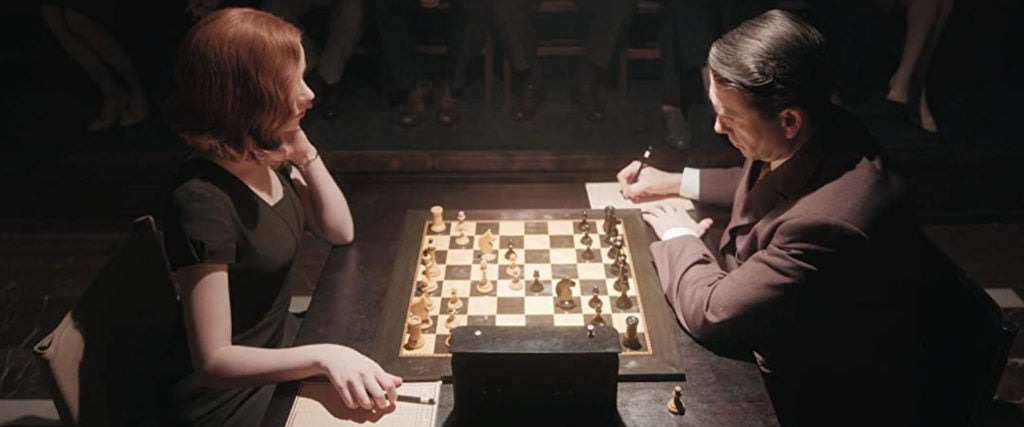For decades, chess has been overshadowed by video games and literally whatever else was available in the board game closet. But suddenly, that’s all changed. “Chess has been growing like crazy during the pandemic,” says Nick Barton, Director of Business Development for Chess.com. “We’ve seen a roughly 200 percent increase in new members onboarded to the site year-over-year since March.”
The boredom of quarantine certainly has helped. Twitch, too, as a number of streaming chess matches have gone viral there. “But The Queen’s Gambit really put things over the top,” Barton says of the TV adaptation of Walter Tevis’ 1983 novel of the same name. “We probably owe Netflix a fruit basket or something.”
“I don’t think there’s ever been a piece of chess-related media that’s united new and experienced chess players quite like it,” Barton continues. “Chess is hard. It’s been under lock-and-key by serious players for many years and has been largely viewed as inaccessible and intimidating by the masses. But the show has brought new and younger players into the game, which we’ve seen in new member surveys. And so, we’re doing everything we can to give people more Beth Harmon. She’s the biggest star in chess at the moment.”
Despite the fact that the games and people in The Queen’s Gambit are fictional (a la Harmon, its main character), Barton says there is an element of truth to them. They’re “derived from actual games played throughout history, with some minor variations,” he tells me, and save for a few nitpicky details, “the show is a marvel of cultural chess accuracy.”
As such, the chess matches therein are great for analysis. “Analyzing historical matches is a massive part of what we’d call ‘Chess YouTube,’” Barton explains. This is basically the chess version of watching Tony Romo breakdown plays during an NFL game, only with even more nuance. Thanks to computers that can “see moves at depths that are often beyond that of human foresight or creativity,” Barton says moves in chess are typically categorized into those that would be made by a human, those that would be made by a particularly skilled human and “engine moves that are sometimes difficult to find, sometimes incredibly clever and sometimes mindblowing.”
Tryfon Gavriel, a chess enthusiast covering The Queen’s Gambit on his YouTube page KingsCrusher, has plenty of videos analyzing the strategy and calculations Harmon and her opponents make on the show. Beyond the game itself, though, he enjoys analyzing how those tactics and strategies “align to the central themes of the show,” and how they tie into the history and culture of chess overall.
“I remember Garry Kasparov [the World Chess Champion who consulted on the mini-series] saying that when he played in countries around the world, he’d make a point of trying to understand the culture and values of the country he was playing in,” Gavriel tells me. “I’m trying to do the same with my game analysis by looking at the game for what Kasparov had in mind — using the show as a kind of historical and cultural showcase of not just brilliant games but also brilliant players.”
Barton isn’t sure how much longer The Queen’s Gambit — which is on path to becoming one of Netflix’s most popular shows ever — will push new audiences toward the chess community, but he’s hopeful that those who’ve joined so far will feel the lifelong benefits of learning the game. “Getting better at chess isn’t about getting better at chess, it’s about getting better at life,” he says. “You want to take those skills — creativity, pattern recognition, time management, discipline, patience, etc. — and apply them to other aspects of your daily life like work, school or your relationships.”
At which point you won’t just be keeping things in check — you’ll have them in checkmate.

